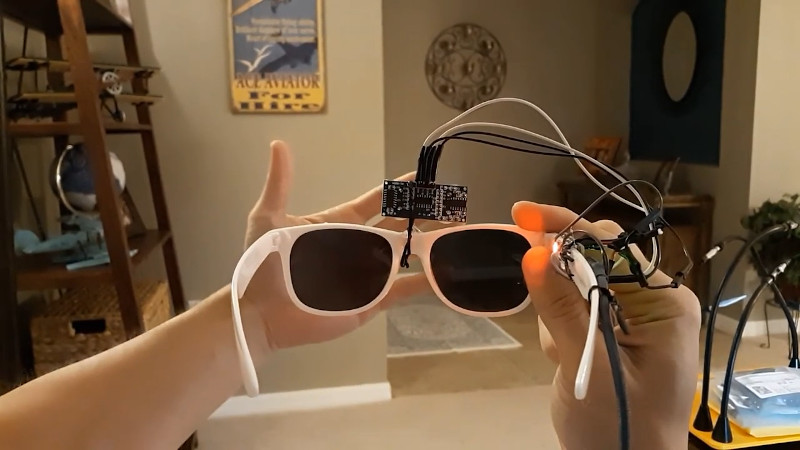In 2020, the world is focused on the rampant spread of a new virus by the name of COVID-19. Like many infectious diseases, transmission can be reduced by good hygiene practices. To help in the fight, [Nick Bild] threw together a device he calls Sentinel.
The concept is simple. Reduce the user touching their own face by shining a warning light when such behaviour is detected. This is achieved through the use of an Arduino, which controls an LED through feedback from an ultrasonic proximity sensor. The LED is placed in the user’s peripheral vision, glowing when the sensor detects hands (or other objects) approaching the face.
While it’s unlikely to be rolled out en-masse, it’s a project that nevertheless reminds us to practice good self-care routines. And, as the adage goes, prevention is better than cure. As governments and industry grapple with the ongoing problem, consider how your supply chain may be exposed to the crisis. Video after the break.















The supply chain has been severely impacted in Australia not due to issues with the virus but do to a bunch of cognitively challenged individuals that have bought every last scrap of toilette paper.
Greeting fellow sane Aussie.
Given that a bunch of crazy people would go and buy all the toilet paper, I made a calm and rational decision to get 5 big packs before the rush.
when wearing glasses people tend to push up the glasses just above the nose when the glasses start to slide down the nose,
so for people not normally wearing glasses, they may actually end up touching their face (or nose rim) even more..
Eeeyyyy my childhood acne habits finally pay off! I don’t need any creepy facial recognition ML app or kinky PIR sensor glasses. I just don’t often touch my face. And I wash my hands and face almost obsessively.
Seriously though, the response to this is weird. It’s a serious pandemic. I’m not trying to minimize that. But I think that the public reaction to it is really just a perfect nutshell of how social media and hypercommunication has ruined our brains and our public spaces. We’re collectively crazy and can’t tell because it happened slowly and homogeneously enough that we’ve developed a blind spot.
When we get through this (and we absolutely will) we really need to circle back and examine how our current technological media landscape has affected our culture. This is very weird. It’s a real threat, as I said. But both are true. Our response to this threat is extremely strange and we need to figure out why once the dust settles. We’ve been having an asbestos- or tetraethyl lead-style epitome about social and communication technology for a while now, but it’s obscure enough that it has never really bubbled up and become actionable. We really need to figure this out before we go much further. The infodemic is not as threatening in the short term, but it’s far FAR more concerning in the long term. Really hope we have a big come-to-Jesus moment about it soon. Maybe not from this current crisis, but for the love of god hopefully something will stir the public to action. I don’t think the chances are good. I hope I’m being too pessimistic and will be proven wrong.
In all this text you never wrote about WHAT social media has caused conserning the Virus. Only that it’s a problem and has to be reflected on in the future. So what is the “weird response”?
Ridiculously widespread acceptance of heavy-handed authoritarian measures. It’s very creepy.
Given that you are one of the humans you seem to be uneducated as to how they behave.
Our response to this threat in the West is almost complete apathy. It’s getting out of hand really fast, and people just go on with their lives. Surreal.
What’s this “our” business??? Speak for yourself! My employer has mandated work-at-home for all employees, public events are cancelled left and right, public transit ridership is down 50%, local consortium already has a vaccine in animal testing.
Sure, there are some local things, depending on where you are, but the overall response is severely lacking. Plenty of places where people still go to work, or go to events, bars, clubs, and markets, travel by packed public transport.
The virus is not called COVID-19 that’s the disease caused by the virus. The virus is called SARS-CoV-2.
Insanity pandemy, finally on HaD :)
Don’t touch your face … until you have washed at home and are in your normal environment. Lets not all become a bunch of obsessive face avoiders here.
I soon as I read this, I got an itch on my upper lip…. where’s the hand gel!!?
Just mix a bottle of capsaicin oil into a bottle of hand gel, first time you rub your eyes will be the last time you touch your face for a month!